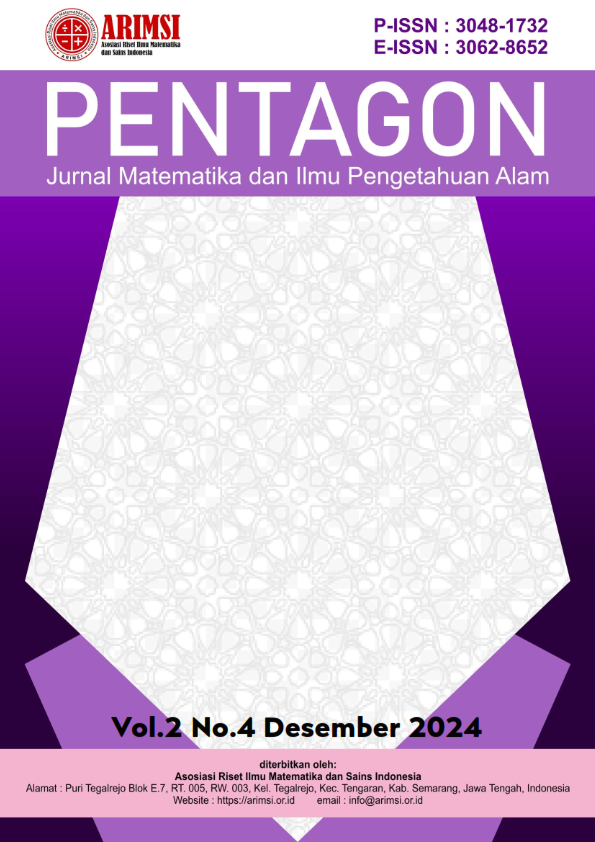Penggunaan Python Dalam Menyelesaikan Permasalahan Supremum dan Infimum Suatu Himpunan
DOI:
https://doi.org/10.62383/pentagon.v2i4.267Keywords:
Infimum, Supremum, Python, Quantitative Research, Sets, Data Analysis, ProgrammingAbstract
This research uses a quantitative approach with the help of Python to solve infimum and supremum problems involving measurements, calculations and data analysis to draw conclusions. This research process consists of several stages: problem identification, modeling a set of numbers or functions, and implementing algorithms in Python to calculate the infimum and supremum. The calculation results are compared with manual analytical solutions to ensure accuracy and efficient use of Python. Sets as a basic concept in programming allow organizing data and logical operations more efficiently. These findings show that Python is not only effective in calculating supremum and infimum, but also speeds up the solution process compared to manual methods. The results of the program execution show that the analyzed set has an infimum fan supremum which is in accordance with the theory, where set 1 has an infimum of 2, set 2 has a supremum of 5, and set 3 has an infimum of 1 and a supremum of 4.
Downloads
References
Alfarizi, M. R. S., Al-farish, M. Z., Taufiqurrahman, M., Ardiansah, G., & Elgar, M. (2023). Penggunaan Python sebagai bahasa pemrograman untuk machine learning dan deep learning. Karimah Tauhid, 2(1), 1-6.
Bartle, R. G., & Sherbert, D. R. (2010). Introduction to real analysis. Urbana: John Wiley & Sons.
Cohen, P. J. (2017). Set theory and the continuum hypothesis. Dover Publications.
Duha, R., & Harefa, D. (2024). Kemampuan pemecahan masalah matematika. CV Jejak (Jejak Publisher).
Hernadi, J. (2015). Analisi real elementer. Yogyakarta: Erlangga.
Kumar, A., & Singh, R. (2021). An efficient approach for finding supremum and infimum in real analysis. Journal of Mathematical Sciences, 256(4), 123-134.
Patel, S., & Gupta, A. (2022). Implementasi of mathematical concepts in Python for educational purposes. International Journal of Computer Applications, 182(15), 8-12.
Sedgewick, R., & Wayne, K. (2016). Algorithms. Addison-Wesley.
Singh, P., & Mehta, R. (2021). Mathematical modelling and Python: A comprehensive approach. Journal of Computational Mathematics, 39(3), 331-347.
Ua, A. M. T. I., Lestari, D., Marpaung, E. S. K., Ong, J., Savinka, M., Nurhaliza, P., & Ningsih, R. Y. (2023). Penggunaan bahasa pemrograman Python dalam analisis faktor penyebab kanker paru-paru. JUPTI: Jurnal Publikasi Teknik Informatika, 2(2), 88-99.
Waruwu, M. (2023). Pendekatan penelitian pendidikan: Metode penelitian kualitatif, metode penelitian kuantitatif dan metode penelitian kombinasi (mixed method). Jurnal Pendidikan Tambusai, 7(1), 2896-2910.
Zhang, Y., & Wang, X. (2020). Data analysis and visualization techniques using Python. Journal of Data Science and Analytics, 5(2), 45-59.
Downloads
Published
How to Cite
Issue
Section
License
Copyright (c) 2024 Pentagon : Jurnal Matematika dan Ilmu Pengetahuan Alam

This work is licensed under a Creative Commons Attribution-ShareAlike 4.0 International License.





